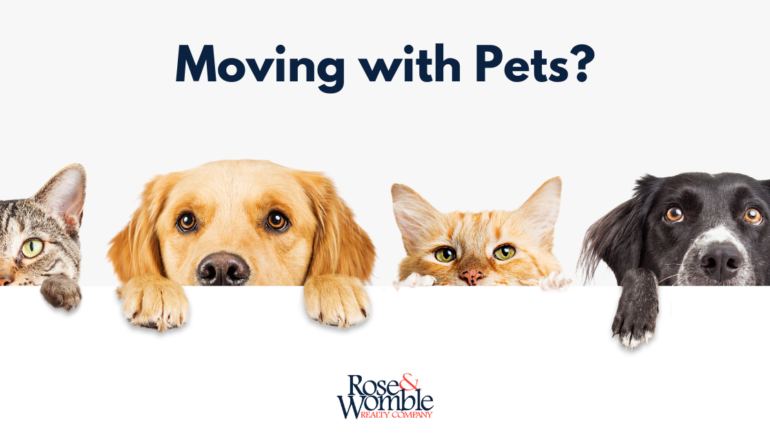Moving is always exciting! But for pets, it can be extremely stressful. Moving with pets can be successful and stress-free when using these friendly tips during all stages of your move.
This guide can assist with the transition of a move with your beloved pets by making an effort to maintain routines and provide a safe comfortable environment.
Preparing Your Cat For A Move
As independent as your cat may seem, a move to a new house can be confusing for any domestic animal. The SPCA suggests introducing a pet carrier or having one available because your kitty has the opportunity to see a comfortable familiar space to relax. Be sure to place a couple of treats and toys to form a positive association with their crate. Also, take a couple of trial rides to get them familiar with the sights and sounds in the car.
Your cat may be eager to start an outdoor adventure in their new neighborhood, so have a collar on them at all times.

Preparing Your Dog For A Move
Outside walks with your dog are likely their favorite activity! You should slowly introduce your furry companion to the new neighborhood so they can become comfortable. In the days and weeks leading up to the move, consider walking in the new area! You may also like to discover your new dog walk route before the move. It’s a win-win.
Make Arrangements
Ask a friend if they’re available to keep your furry relative on moving day, or reserve a day with a daycare center for pets. Understandably this may not be an option, so here are a few tips to make your move a success for the whole family.
Overnight Kit
This will make it easy for you to locate the necessities for your pet to maintain your normal routine as close as possible. Place things like food, dog bags, leashes, toys, litter, and anything else you know will be used in the first night or two.
Contact Your Vet
If you are relocating and likely going to be using a new veterinarian, contact your local vet to collect all the records including medical and vaccine history. They may suggest a new veterinarian in the area you are moving to. Be sure to ask for any recommendations on choosing your next vet.
Transport
This is a new neighborhood, so be cautious the animals have their collars with ID tags, and leashes are securely fastened before exiting the vehicle. If you are using a crate to transport, you will want to keep the door latched until walking inside a secure location of the home. Minimize the opportunity for your pet to get lost or go exploring in your new neighborhood as you are moving.
